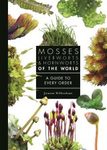By: Patrick E McGovern(Author), Robert G Mondavi(Foreword By)
441 pages, 8 plates with 16 colour photos and colour illustrations; 35 b/w photos, 9 b/w illustrations, 7 b/w maps
![Ancient Wine Ancient Wine]()
Click to have a closer look
About this book
Contents
Customer reviews
Biography
Related titles
About this book
The history of civilization is, in many ways, the history of wine. This book is the first comprehensive account of the earliest stages of the history and prehistory of viniculture, which extends back into the Neolithic period and beyond. Elegantly written and richly illustrated, Ancient Wine opens up whole new chapters in the fascinating story of wine by drawing on recent archaeological discoveries, molecular and DNA sleuthing, and the writings and art of ancient peoples. In a new afterword, the author discusses exciting recent developments in the understanding of ancient wine, including a new theory of how viniculture came to central and northern Europe.
The Princeton Science Library edition features a new 58-page afterword by the author.
Contents
List of Illustrations xi
Preface xv
1. Stone Age Wine 1
Sifting Fact from Legend 3
Man Meets Grape: The Paleolithic Hypothesis 7
Whence the Domesticated Eurasian Grapevine? 11
When and Where Was Wine First Made? 14
2. The Noah Hypothesis 16
Genetics and Gilgamesh 16
Transcaucasia: The Homeland of Viniculture? 19
Exploring Georgia and Armenia 21
Ancient DNA 25
Casting a Wider Net in Anatolia 29
The Indo-European Homeland 30
"Noah's Flood" 35
Farther Afield 37
3. The Archaeological and Chemical Hunt for the Earliest Wine 40
Godin Tepe 40
Molecular Archaeology Comes of Age 48
Identifying the Godin Tepe Jar Residues by Infrared Spectrometry 51
Archaeological Inference 54
From Grape Juice to Wine to Vinegar 55
Winemaking at the Dawn of Civilization 58 The First Wine Rack? 60
A Symposium in the True Sense of the Word 61
4. Neolithic Wine! 64
A Momentous Innovation 65
Liquid Chromatography: Another Tool of Molecular Archaeology 68
Ancient Retsina: A Beverage and a Medicine 70
A Media Barrage 72
Wild or Domesticated Grapes? 74
More Neolithic Wine Jars from Transcaucasia 74
Creating a Ferment in Neolithic Turkey: A Hypothesis to Be Tested 78
5. Wine of the Earliest Pharaohs 85
A Royal Industry Par Excellence 85
An Amazing Discovery from a Dynasty 0 Royal Tomb 91
Ancient Yeast DNA Discovered 103
6. Wine of Egypt's Golden Age 107
The Hyksos: A Continuing Taste for Levantine Wines 107
Festival Wine at the Height of the New Kingdom 120
Wine as the Ultimate Religious Expression 134
Wines of the Heretic King, Akhenaten, and of Tutankhamun 137
The Vineyard of Egypt under the Ramessides 141
7. Wine of the World's First Cities 148
A Beer-Drinking Culture Only? 149
Banqueting the Mesopotamian Way 158
Wine, Too, Was Drunk in the Lowland Cities 160
Transplanting the Grapevine to Shiraz 164
8. Wine and the Great Empires of the Ancient Near East 167
Wine Down the Tigris and Euphrates 168
Wines of Anatolia and the Lost Hittite Empire 174
Assyrian Expansionism: Cupbearers, Cauldrons, and Drinking Horns 188
The Fine Wines of Aram and Phoenicia 201
Eastward to Persia and China 206
9. The Holy Land's Bounty 210
Winepresses in the Hills, and Towers and Vineyards in the Wadi Floors 212
The Success of the Experiment 217
Serving the Needs of a Cosmopolitan Society 220
Wine for the Kings and the Masses 225
Dark Reds and Powerful Browns 233
Wine: A Heritage of the Judeo-Christian Tradition 236
10. Lands of Dionysos: Greece and Western Anatolia 239
Drinking the God 240
A Minoan Connection? The Earliest Greek Retsina 247
Wine Mellowed with Oak 259
"Greek Grog": A Revolution in Beverage Making 262
Wine and "Greek Grog" during the Heroic Age 268
11. A Beverage for King Midas and at the Limits of the Civilized World 279
King Midas and "Phrygian Grog" 279
Re-creating an Ancient Anatolian Beverage and Feast 293
To the Hyperborean Regions of the North: "European Grog" 296
12. Molecular Archaeology, Wine, and a View to the Future 299
Where It All Began 299
Consumed by Wine 302
Why Alcohol and Why Wine? 305
The Lowly Yeast to the Forefront 307
Mixing Things Up 308
Wine, the Perfect Metaphor 312
Afterword 317
Selected Bibliography 375
Illustration Credits and Object Dimensions 397
Index 403
Customer Reviews
Biography
Patrick E. McGovern is a Senior Research Scientist in the Museum Applied Science Center for Archaeology (MASCA)and is Adjunct Associate Professor of Anthropology at the University of Pennsylvania. The author or editor of eight other books on archaeology and archaeological science, over the past two decades he has pioneered the emerging field of biomolecular archaeology.
By: Patrick E McGovern(Author), Robert G Mondavi(Foreword By)
441 pages, 8 plates with 16 colour photos and colour illustrations; 35 b/w photos, 9 b/w illustrations, 7 b/w maps
"No one is better qualified to sift through the widely scattered clues [to the origins of winemaking] than McGovern, a skilled scientific sleuth who wields the most powerful tools of modern chemistry in his search for the roots of ancient wines."
– J. Madeleine Nash, Time Magazine
"A rich treasury of lore on viticulture [...] [W]ill likely remain a standard in every serious wine-lover's library for a long time."
– Laurence A. Marschall, Natural History
"Patrick McGovern serves us a magnificent feast of science and history that melds sophisticated chemistry with good, old-fashioned historical sleuthing. His innovative research has revolutionized our knowledge of the origins of one of humanity's greatest pleasures. This is an archaeological and gustatory delight for specialist and general reader alike."
– Brian Fagan, author of The Little Ice Age
"Remarkable."
– Adam Gopnik, New Yorker
"Riveting, informative and thought-provoking."
– James C. Wright, American Scientist














































